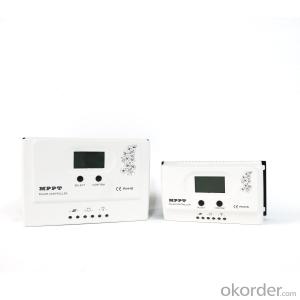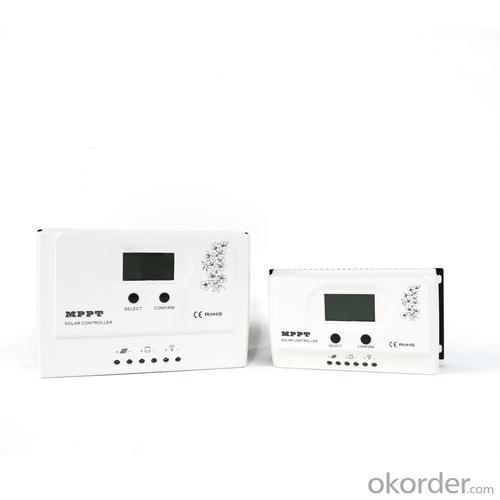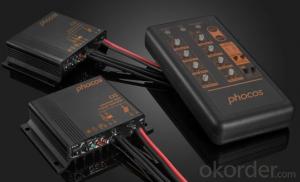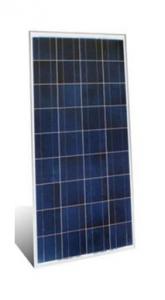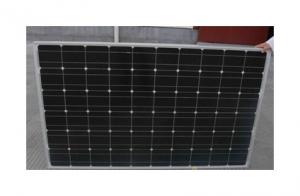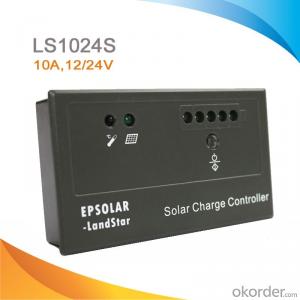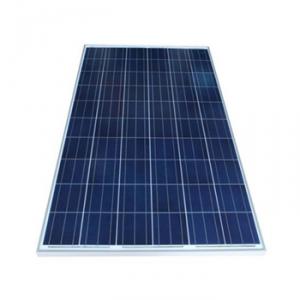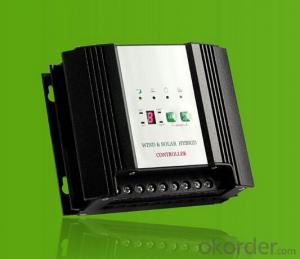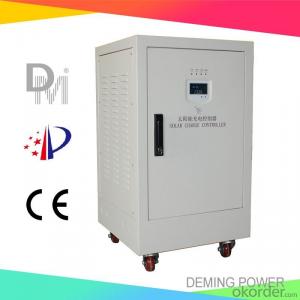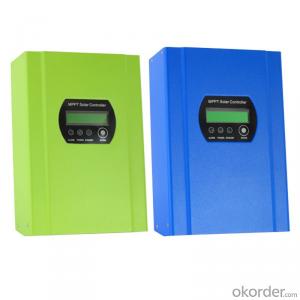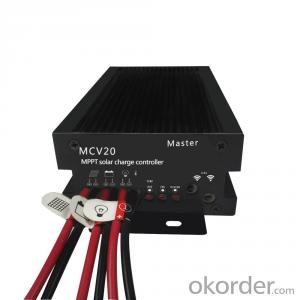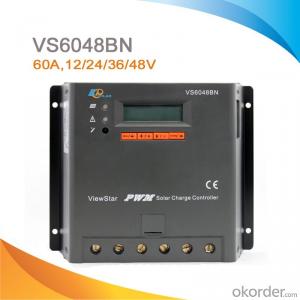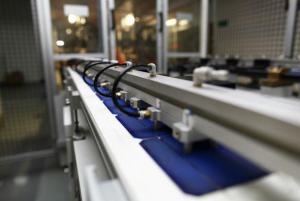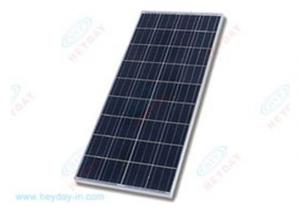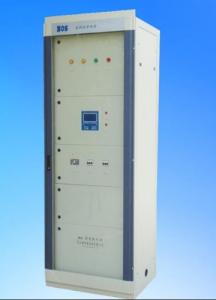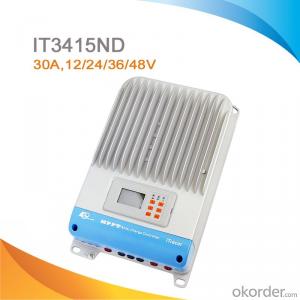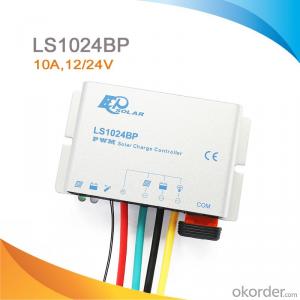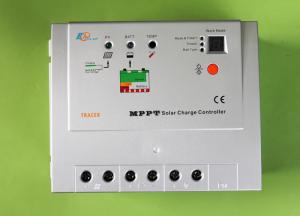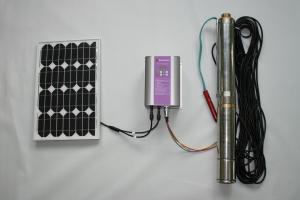Plasmatronics Solar Controllers - Max. PV Input 100V Solar Charge 12V/24V Controller 15A MPPT with LCD
- Loading Port:
- China main port
- Payment Terms:
- TT OR LC
- Min Order Qty:
- 20 unit
- Supply Capability:
- 9999 unit/month
OKorder Service Pledge
OKorder Financial Service
You Might Also Like
Max. PV Input 150V Solar Charge 12V/24V Controller 15A 20A 30A 40A 50A MPPT with LCD
I-P-Wiser 1 series adopted with auto cool, high conversion efficiency, LCD display and free PC software. It features an efficient MPPT control algorithm to track the maximum power point of the PV array in any environment. Greatly improve the utilization of solar panel. Also added the output function(USB 5V 3A). For the mppt controller can be widely used in off-grid solar system, Communication base station solar system, household solar systems, street light solar systems, field monitoring and other fields.
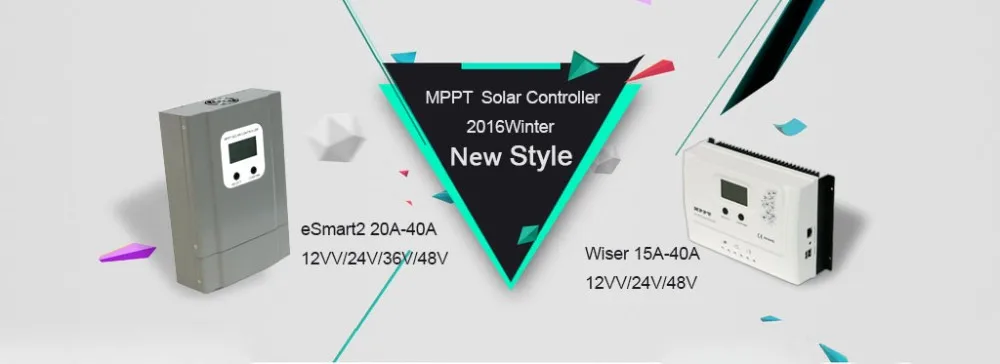
| Product Show |
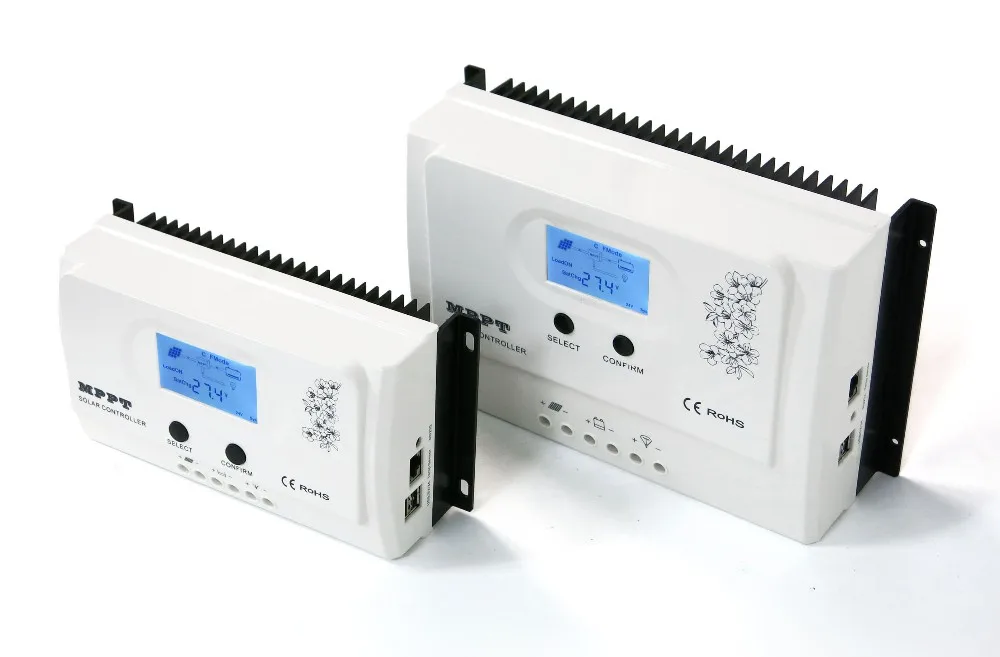
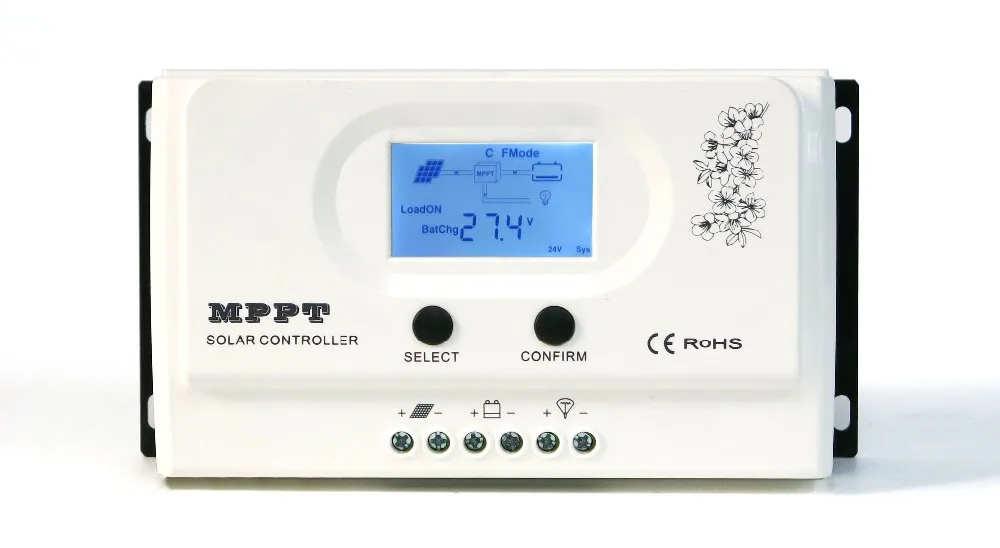
| MPPT Controller connection diagram |
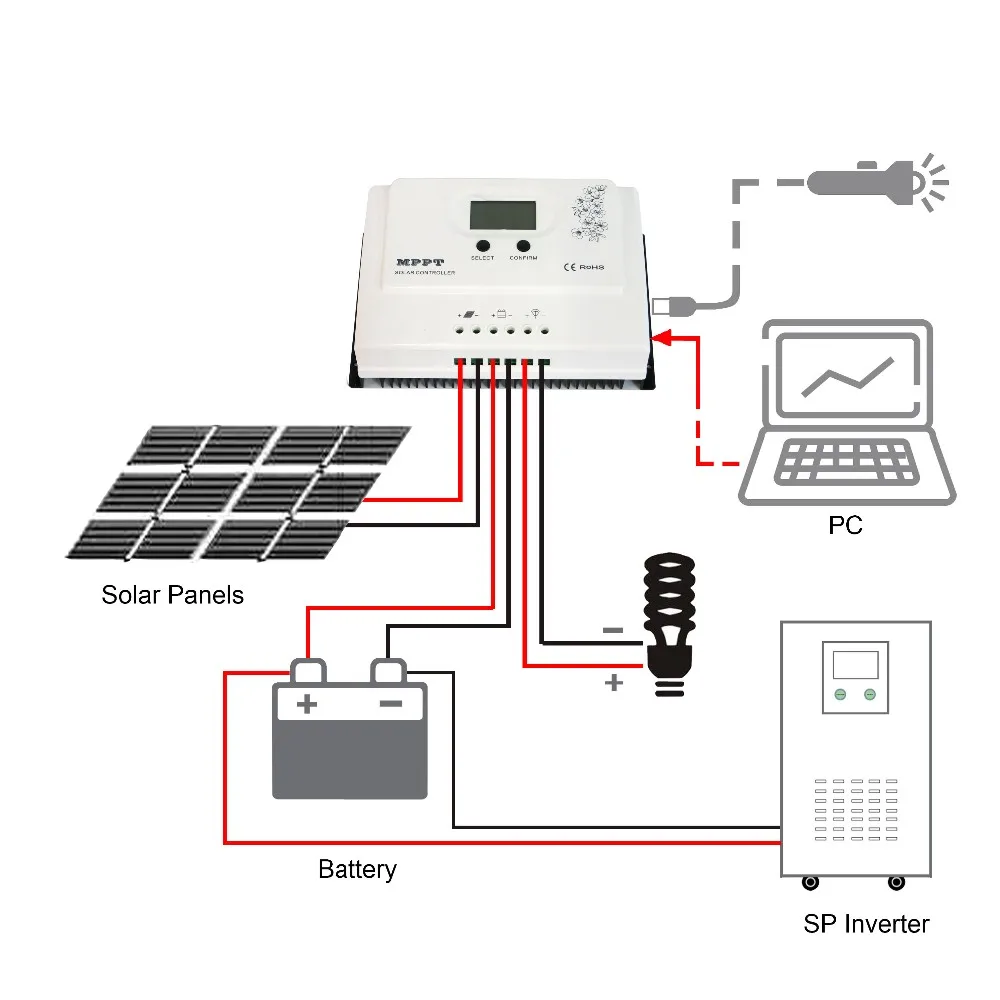
| Features |
1.High efficiency MPPT control algorithm, MPPT efficiency ≥99.5%, whole Machine conversion efficiency upto 98%;
2.12V/24V system Automatic Recognition,users can use it in different system conveniently.
3.Maximum PV input voltage: 100VDC(15A, 20A), 150VDC (30A, 40A,50A)
4.Charge mode: three stages (fast charge, constant charge, floating charge). It prolongs service life of the batteries.
5.Discharge mode: ON/OFF mode, PV voltage control mode.
6.Recommended battery types: sealed lead acid, vented, gel, NiCd battery. Other types of the batteries can also be defined.
7.Most information could be provided by LCD like: system type., PV input voltage, battery type, battery voltage, charging current, charging power, working status and so on. Also customer's information like company name, website and logo can be added into Solar Eagle software.
8.RS232 communication, we can offer communication protocol also, it’s convenient for user’s integration management.
9.CE, RoHS, FCC certifications approved.. We can help clients to approve other certifications.
10.2 years warranty. And 3~10 years extended warranty service also can be provided.
Upper Computer Software and Test Software |
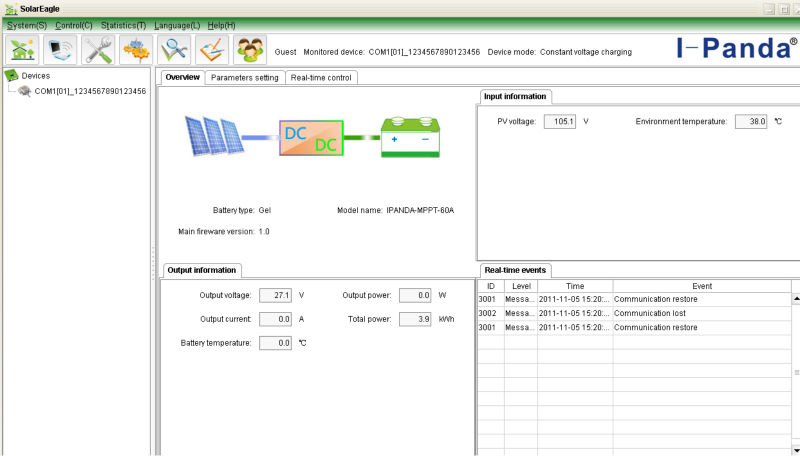
PC software_SolarEagle
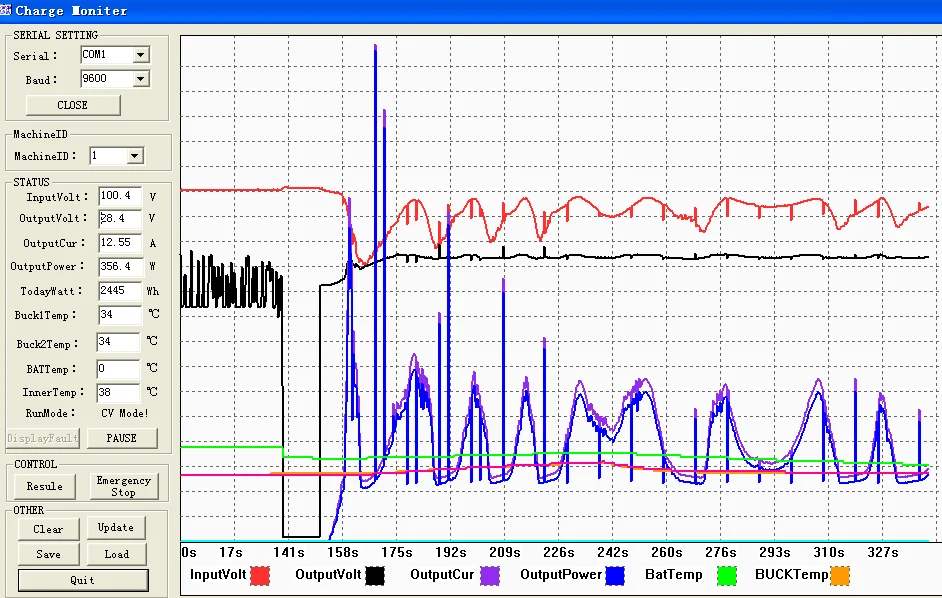
Monitoring software
Visual display of charge and discharge status, PV voltage, charge voltage, charge current, and can set the battery type, LOAD output control;
parameters |
Model: | 15A | 20A | 30A | 40A | 50A | |
I-P-Wiser 1-12V/24V-Series | ||||||
Charge mode | MPPT(maximum power point tracking) | |||||
MPPT efficiency | ≥99.5% | |||||
System type | DC12V/24V system | Automatic Recognition | ||||
INPUT CHARACTERISTICS | ||||||
PV Max PV input voltage(VOC) | 12V/24V system | DC100V | DC150V | |||
Start the charging voltage point | 12V system | 18V | ||||
24V system | 32V | |||||
High input voltage protection point | 12V/24V system | DC100V | DC150V | |||
High input voltage recovery point | 12V/24V system | DC95V | DC145V | |||
Rated PV power | 12V system | 200W | 260W | 390W | 520W | 650W |
24V system | 400W | 520W | 780W | 1040W | 1300W | |
CHARGE CHRECTRESTICS | ||||||
Selectable Battery Types | 12V/24V system | Sealed lead-acid batteries, Vented batteries Gel, NiCd battery (Other types of the batteries also can be defined) | ||||
Charge method | 12V/24V system | Three stages charge: constant current(MPPT), constant voltage, floating charge | ||||
Charge rated current | 12V/24V system | 15A | 20A | 30A | 40A | 50A |
OUTPUT DISCHARGE CHARACTERISTICS | ||||||
USB (Total for 2 USB output) | DC5V 3A | |||||
LOAD output voltage | Based on battery voltage | |||||
Max. DC Load current | 30A | |||||
Output control mode | ON/OFF mode, PV voltage control mode | |||||
Output control set way | Controller button or PC software | |||||
DISPLAY | ||||||
LCD Display | System type, PV voltage,charge voltage, charging current, charging power, temperature etc. | |||||
PC software | RS232 | |||||
OTHER PARAMETERS | ||||||
Protection function | Yes (Over voltage, low voltage, over temperature, over load, Short circuit protection etc.) | |||||
Cooling mode | Auto cool | |||||
Type of Mechanical Protection | IP 30 | |||||
Measurement DxWxH (mm) | 200*110*66 | 243*155*79 | ||||
Packing DxWxH (mm) | 249*144*105 | 289*189*113 | ||||
N.W. (KG) | 0.9 | 1.8 | ||||
G.W. (KG) | 1.3 | 2.2 | ||||
Certifications |
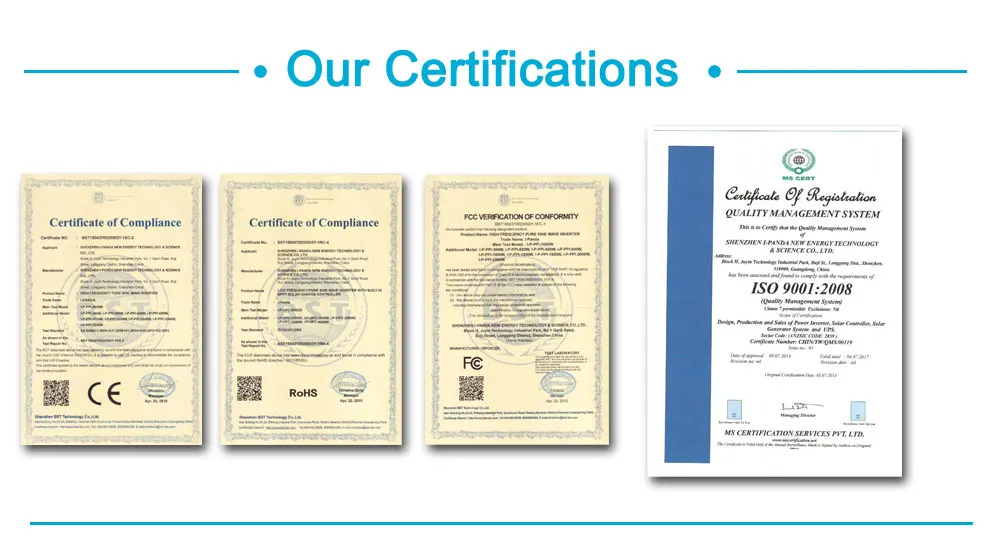
F&Q: |
Q1. How to ensure and monitor the products quality?
A1: We have established a perfect Quality Management System, In strict
accordance with ISO9001: 2008 quality system and ISO14001 environment system for quality assurance management;
Our ISO9001:2008 Quality System certificate encoding: CHIN/TW/QMS/00119;
Our ISO14001 Environment System certificate encoding: CHIN/TW/EMS/00028;
Q2. What is the warranty of products?
A2: The warranty period of different products are different; 5 years, 3 years, 2 years, 1 years; More details please refer to the product specification or manual; we will provide free life-long technical support ;
Q3. What is the difference between MPPT&PWM?
A3. MPPT charging mode, peak efficiency up to 99%, saving 30%~60% solar panel than traditional PWM controller.
- Q: What is the communication protocol supported by a solar controller?
- The communication protocol supported by a solar controller is typically Modbus, which allows for data exchange and control between the solar controller and other devices in the solar power system.
- Q: Can a solar controller be used with a 24V battery system?
- Yes, a solar controller can be used with a 24V battery system. Solar controllers are designed to regulate the charging of batteries from solar panels, and they are available in various voltage ratings to match different battery systems, including 24V.
- Q: Can a solar controller be used with solar-powered indoor waste management facilities?
- Solar-powered indoor waste management facilities can indeed utilize a solar controller. This controller plays a vital role in solar power systems as it regulates the flow of electricity from the solar panels to the batteries. Its primary function is to ensure proper charging of the batteries and protect them from potential damage caused by overcharging or discharging. To implement a solar controller in a solar-powered indoor waste management facility, one would need to connect it to the solar panels installed on the facility's roof or surrounding areas. These panels capture sunlight and convert it into electricity, which can then be stored in batteries for later use. The solar controller would closely monitor the charging process, ensuring that the batteries are charged at the appropriate voltage to prevent any harm. It effectively manages the flow of electricity from the solar panels, optimizing the charging efficiency of the batteries and reducing reliance on grid electricity. By incorporating a solar controller, these facilities can significantly reduce their carbon footprint and operational expenses by utilizing renewable energy sources. Furthermore, it provides a reliable and sustainable power supply, even in areas with unreliable grid electricity. In conclusion, the inclusion of a solar controller is imperative for solar-powered waste management facilities. It allows them to harness the sun's energy efficiently, operate in an environmentally friendly manner, and achieve optimal performance.
- Q: What is the purpose of the low voltage disconnect feature on a solar controller?
- In order to safeguard the batteries from over-discharge, the low voltage disconnect feature on a solar controller serves a crucial purpose. When the battery's voltage drops below a certain level, irreversible damage can occur, significantly reducing its lifespan. By monitoring the battery voltage, the low voltage disconnect feature effectively disconnects any load, such as appliances or devices, from the battery once the voltage falls below a predetermined threshold. This action prevents excessive drainage of the battery, ensuring that it retains a sufficient charge for proper functioning and longevity. Consequently, by disconnecting the load, the low voltage disconnect feature plays a vital role in protecting and optimizing the battery's performance within a solar power system.
- Q: What is the maximum voltage rating of a solar controller?
- The maximum voltage rating of a solar controller typically varies depending on the specific model and manufacturer. However, it is commonly found to be around 12V, 24V, or 48V for most standard solar controllers. It is important to refer to the product specifications or consult the manufacturer for the precise maximum voltage rating of a particular solar controller.
- Q: Can a solar controller be used in a solar-powered telecommunications system?
- Yes, a solar controller can be used in a solar-powered telecommunications system. A solar controller is responsible for regulating and controlling the charging process of the battery used in the system. It ensures that the battery is charged efficiently and protects it from overcharging or discharging. In a solar-powered telecommunications system, where solar panels generate electricity to power the system, a solar controller is essential to optimize the charging process and ensure the smooth operation of the system.
- Q: How does a solar controller handle variations in solar panel degradation?
- A solar controller handles variations in solar panel degradation by constantly monitoring the power output of the solar panels. It adjusts the charging and discharging parameters to compensate for any decrease in the panel's performance due to degradation, ensuring optimal power conversion and utilization.
- Q: What is the maximum charging current that a solar controller can provide?
- The maximum charging current that a solar controller can provide depends on several factors including the specifications of the solar controller itself and the capacity of the battery being charged. Solar controllers typically have a maximum charging current rating, which is the maximum amount of current that it can safely provide to the battery. This rating can vary widely depending on the model and brand of the solar controller. Additionally, the maximum charging current that a solar controller can provide might also be limited by the capacity of the battery being charged. Some batteries have specific charging requirements and limitations, and exceeding these limitations can lead to damage or reduced battery lifespan. It is important to consult the specifications and guidelines of both the solar controller and the battery to determine the maximum charging current that can be safely utilized.
- Q: How do I determine the maximum load output current for a solar controller?
- To determine the maximum load output current for a solar controller, you need to refer to the specifications provided by the manufacturer. These specifications should indicate the maximum load output current supported by the controller. Additionally, it is important to consider the load requirements and ensure they are within the limits specified by the manufacturer to avoid overloading the solar controller.
- Q: What is the maximum charging current for a solar controller?
- The maximum charging current for a solar controller can vary depending on the specific model and design. However, in general, solar controllers are typically designed to handle charging currents ranging from 10 to 60 amps, with some higher-end models capable of supporting even higher currents. It is important to consult the manufacturer's specifications or user manual to determine the exact maximum charging current for a particular solar controller.
Send your message to us
Plasmatronics Solar Controllers - Max. PV Input 100V Solar Charge 12V/24V Controller 15A MPPT with LCD
- Loading Port:
- China main port
- Payment Terms:
- TT OR LC
- Min Order Qty:
- 20 unit
- Supply Capability:
- 9999 unit/month
OKorder Service Pledge
OKorder Financial Service
Similar products
Hot products
Hot Searches
Related keywords
